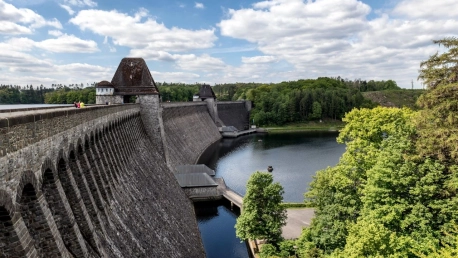The Western U.S., historically reliant on its robust hydropower facilities, is grappling with a significant downturn in renewable energy output due to severe weather patterns. Years of intense heat waves coupled with persistent droughts have taken their toll on the region’s ability to generate electricity from water sources. The situation in 2023 has been especially severe, as the Energy Information Administration disclosed an alarming statistic: hydropower production has plummeted to its lowest point in two decades, with a stark 11% drop compared to the previous year. This decline poses serious challenges to the energy supply in a region that has long depended on its rivers and dams for clean power. The diminishing hydropower capacity highlights the broader impacts of climate change on renewable resources and underscores the urgency of adapting energy strategies to increasingly volatile environmental conditions.
The Vicious Cycle of Climate Change and Energy
Effects of Drought on Hydropower
Western hydropower, chiefly sourced from rivers and dams, is suffering a significant blow due to ongoing drought conditions. The falling water levels in key areas, notably California and the Colorado River Basin, impede hydroelectric production capacities. These reservoirs, vital for electricity supply, record some of their lowest water quantities. This situation presents a dual challenge: it undermines efforts to sustain renewable energy sources and forces an increased dependence on fossil fuels for electricity. The latter aspect aggravates the situation, as the surge in greenhouse gas emissions from fossil fuel plants contributes further to climate change — the very force that erodes the efficacy of hydropower facilities. The consequence is a negative feedback loop that highlights the vulnerability of energy infrastructures to environmental changes and emphasizes the urgent need for adaptive strategies in power generation amid shifting climate patterns.
Heatwaves Compounding Hydropower Challenges
Rising temperatures are worsening drought conditions, with the Pacific Northwest facing an exceptional heatwave in May 2023 which disrupted its typically mild weather patterns. The unexpected heat spike led to the premature melting of snowpacks, crucial for providing water during summer. While the initial melt resulted in a temporary water surge, it was quickly followed by the lack of a consistent water supply needed for hydropower generation at times of highest demand. These extreme weather occurrences underscore the significant challenges in hydropower management and the pressing need to develop robust strategies to adapt to these climatic changes. The repercussions of such weather extremes on energy resources push for urgent evaluation and response to ensure reliable power generation and environmental sustainability in changing climates.
Adapting to Declining Renewable Resources
The Importance of Diversification
As reliance on hydropower diminishes, the urgency to funnel investment into other renewable sources intensifies. Solar, wind, and geothermal present viable alternatives, though their integration is marred by complexities such as grid compatibility and energy storage solutions. Additionally, each location’s unique geography dictates the feasibility of these options. The dip in hydroelectric power accentuates the importance of a multifaceted approach to renewable energy, to maintain an uninterrupted and reliable power supply. A commitment to diversifying energy resources is fundamental, coupled with supportive policies and technological advancement, to seamlessly offset hydropower deficits and cultivate a robust, eco-friendly power infrastructure. Embracing this transformation can lead to a future where energy is not only green but also resilient to change.
Prospects for Recovery and Sustainability
While 2023 brought temporary relief to California’s drought through atmospheric river storms, the respite is expected to be short-lived, according to experts. The Energy Information Administration expects a 12 percent dip in hydropower production for 2024, reflecting the vulnerable state of this renewable energy source. This decline is symbolic of the larger battle against climate change, emphasizing the need for protecting and enhancing our renewable resources. Improvements in infrastructure, innovative technologies, and dedicated conservation activities are imperative to reinforce hydropower and other renewable energy sectors. Actions taken to bolster these energy sources will be crucial for securing energy reliability and advancing toward a sustainable and resilient future. These efforts will not only assure continuous energy supply but will also be a step forward in mitigating the impacts of climate change.









